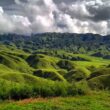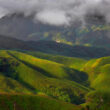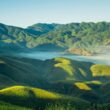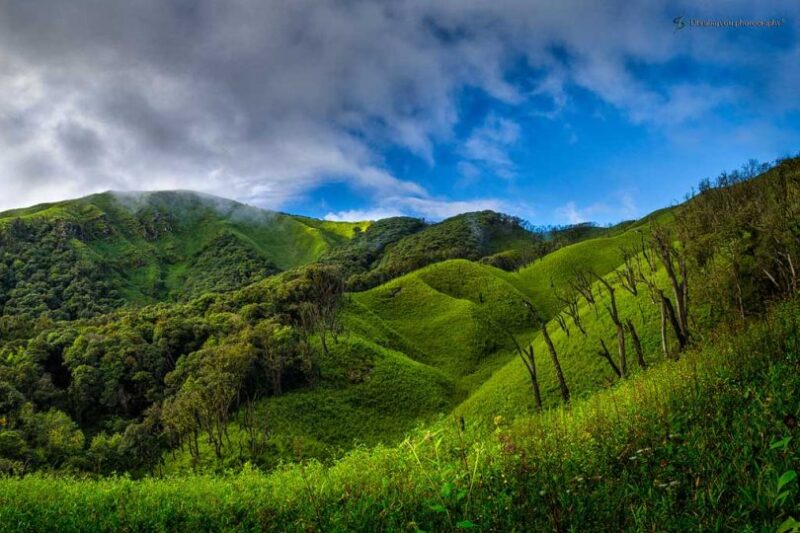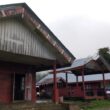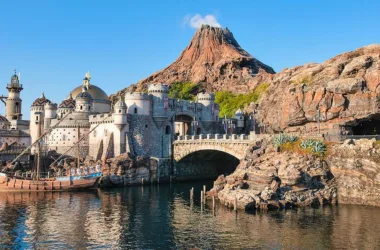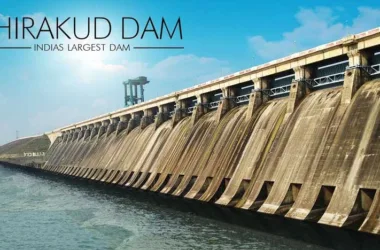Hidden in the folds of the Eastern Himalayas, Dzukou Valley is a breathtaking stretch of rolling green hills and vibrant wildflowers on the border of Nagaland and Manipur. While many travelers visit for a day trek, camping in Dzukou Valley is the ultimate way to immerse yourself in its raw beauty.
Imagine waking up to a golden sunrise over endless meadows, the mist lifting slowly to reveal a panorama that looks straight out of a fantasy novel. If you love adventure, solitude, and nature at its purest, this is your perfect escape.
This complete guide will cover where to camp, what to carry, safety tips, and the best time to go, so you can plan an unforgettable Dzukou Valley camping adventure.
Table of Contents
- Why Camp in Dzukou Valley?
- Best Time for Camping in Dzukou Valley
- How to Reach Dzukou Valley
- Where to Camp in Dzukou Valley
- Camping Permits and Fees
- What to Pack for Camping in Dzukou Valley
- Safety Tips for Camping
- Why Camp Instead of Staying in the Rest House?
- Sample Itinerary for Dzukou Valley Camping
- Conclusion
Why Camp in Dzukou Valley?
✅ Stay Longer:
Day hikes limit your time. Camping lets you explore deeper trails and hidden viewpoints.
✅ Avoid the Crowds:
Many trekkers return by evening. When you camp, you’ll have the valley mostly to yourself.
✅ Experience Sunrise and Sunset:
These golden hours are when the valley feels magical.
✅ Connect with Nature:
Sleep under a billion stars, with the only sounds being the wind in the grass and occasional rustling wildlife.
Best Time for Camping in Dzukou Valley
Timing your camping trip is essential. The valley transforms across seasons:
Summer (May – June):
- Famous for the blooming Dzukou Lily and wildflowers carpeting the meadows.
- Temperatures: 10°C to 20°C.
- Best for: Flower photography and comfortable nights.
Monsoon (July – September):
- The valley is lush, but trails are muddy and leeches are common.
- Frequent rain and low visibility.
- Best for: Experienced campers only.
Autumn (October – November):
- Clear skies, golden grasslands, crisp air.
- Temperatures: 5°C to 15°C.
- Best for: Perfect trekking weather and photography.
Winter (December – February):
- Snow transforms the valley into a white wonderland.
- Temperatures can dip below -5°C at night.
- Best for: Hardcore adventurers with proper winter gear.
Verdict:
June and October are the most popular months for camping.
How to Reach Dzukou Valley
Nearest City: Kohima, Nagaland.
From Kohima:
- Drive to Viswema Village or Zakhama Village (the main trek starting points).
- Trek 4–7 hours depending on route.
Two Trek Routes:
- Viswema Route: Easier, gradual climb, recommended for carrying camping gear.
- Zakhama Route: Steeper, more challenging.
Where to Camp in Dzukou Valley
Camping in Dzukou Valley is allowed only in designated zones near the Rest House. Wild camping further into the valley is discouraged to protect the fragile ecosystem.
Main Camping Zone:
- Located next to the Dzukou Valley Rest House.
- Flat patches of grassland where you can pitch tents.
- Close access to kitchen shed, water sources, and toilets.
What’s Nearby:
- Shared restrooms (very basic).
- A small kitchen space (you can cook here).
- Rest House for emergencies or if the weather turns bad.
Pro Tip:
Reach early to secure a good camping spot as flat spaces fill up quickly in peak season.
Camping Permits and Fees
Camping is regulated by the Southern Angami Youth Organization (SAYO):
- Entry Fee: ₹100–₹150 per person.
- Camping Fee: ₹100–₹200 per tent per night.
- Rest House Stay (optional): ₹300–₹400 per person in dorms.
Where to Pay:
- Pay fees at the checkpoint before you enter the valley.
- Keep the receipt handy during your stay.
What to Pack for Camping in Dzukou Valley
Tent and Sleep:
- Lightweight 3-season tent (4-season in winter).
- Ground mat or foam pad.
- Sleeping bag rated for 0°C or lower (especially in winter).
Clothing:
- Quick-dry trekking pants.
- Full-sleeve shirts (protection against cold and sun).
- Fleece jacket or down jacket.
- Waterproof shell or poncho.
- Woolen cap, gloves, extra socks.
Cooking:
- Portable stove and fuel (gas cartridges).
- Lightweight cookware (pot, mug, spoon).
- Ready-to-cook meals, noodles, energy bars.
- Thermos flask for hot drinks.
Essentials:
- Refillable water bottles.
- Water purification tablets.
- Headlamp or flashlight with spare batteries.
- First aid kit (painkillers, antiseptic, blister tape).
- Biodegradable soap and toiletries.
- Wet wipes and toilet paper.
- Power bank for charging devices.
- Trash bags (pack all waste out).
Pro Tip:
There is no electricity or shops in the valley, so come fully self-sufficient.
Safety Tips for Camping
✅ Arrive Early:
Reach camp before sunset to pitch your tent safely.
✅ Check Weather:
Sudden rain or fog can reduce visibility.
✅ Keep Warm:
Nights are cold—even in summer.
✅ Avoid Wildfires:
Only cook in designated kitchen areas.
✅ Respect Nature:
Carry back all waste. Do not pick flowers or disturb wildlife.
✅ Know Emergency Contacts:
- SAYO volunteers are usually present at the Rest House.
- Carry the contact of your homestay or driver in Kohima.
Why Camp Instead of Staying in the Rest House?
While the Dzukou Rest House is a good backup, camping offers unmatched freedom and intimacy with nature:
- Wake up in your own tent surrounded by misty meadows.
- Stargaze at night without light pollution.
- Choose your spot to suit your photography plans.
- A true adventure experience away from dorm crowds.
Sample Itinerary for Dzukou Valley Camping
Day 1:
- Arrive in Kohima.
- Drive to Viswema Village.
- Trek 4–5 hours to the valley.
- Pitch your tent, watch the sunset.
Day 2:
- Sunrise photography.
- Explore interior trails.
- Cook breakfast.
- Pack up and trek back to Viswema.
Optional Day 3:
- Extra night for deeper exploration or snow trekking (winter).
Conclusion
Camping in Dzukou Valley is more than an outdoor activity—it’s a journey back to simplicity. No fancy hotels, no mobile network, no crowds. Just you, your tent, and one of the most beautiful landscapes in India. Whether you’re a seasoned trekker or a first-time camper, this experience will stay with you forever.
So pack smart, respect the land, and get ready for an unforgettable adventure under Nagaland’s open sky.

